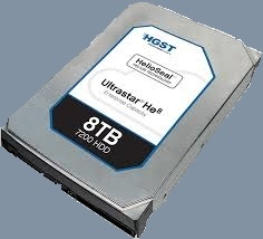


© Estwald ISI 2015 - 2025


Estwald’s
Information System Infrastructures

Storage
There are two types of storage, the platter type usually referred to simply as a
hard drive (HD) and the solid state drive referred to as an SSD. The advantage of the
HD is capacity. The typical SATA HD has capacities from 1 terabyte (TB) to a
maximum of 18 TB in a standard 3.5” drive case. The SSDs advantage is in data
transfer speed. It can read and write data three to five times faster than a HD. They
come in several package types from a standard 2.5” case, to a mSATA card for direct
mounting in motherboards so equipped, and a PCIe version that mounts in a
motherboard card slot among others.
SSDs are excellent for boot drives where the OS and applications are loaded
once and then mostly read from that point on. Their speed is noticeable and
appreciated during the boot process and while bringing up large applications such as
Microsoft Outlook. Their weakness is that their memory has a large but finite number
of write cycles. So using them for storage of large amounts of varying data is not recommended.
HDs provide a cheap storage medium for large amounts of data. However, moving parts in the form of spindle bearings
and read/write head actuators makes them less reliable than SSDs. And although failures cannot be prevented downtime can be
reduced substantially by use of redundancy.
The SSD has come down in price over the last year but they still remain rather pricey with low end units running $0.10/GB
and higher quality units up to $0.70/GB. HDs on the other hand cost between $0.035/GB to $0.10/GB.
SSD manufacturers claim their units are more reliable since they have no moving parts but the warranties do not reflect
their confidence. Most SSDs have a three year warranty. There are a few exceptions however. Intel SSDs offer a five year
warranty and Sandisk Pro and Samsung Pro versions have 10 year warranties. Higher end HDs have a three to five year
warranty while lower end offerings having 2 years and portable USB units mostly having 1 year warranties.
The two most common methods of reducing downtime due to HDs or SSDs failure are known as RAID 1 and RAID 5.
RAID stands for “random array of independent drives”. RAID 1, also known as mirroring, uses two same capacity drives and
duplicates the data from one to the other, a mirror. If one drive fails, upon replacement the remaining drive automatically copies
all its data back to the new drive. Its negatives are 1) only half the storage capacity paid for is usable and 2) the mean time
between failures (MTBF) is 50% of a single drive system. Despite its costliness most major database companies recommend
RAID 1 over RAID 5 due to fears of incomplete memory buffer flushing. Many motherboards provide this capability as a
hardware solution and all Windows OS’s provide it as a software solution under storage manager.
RAID 5 requires a minimum of three same capacity drives with four or five drives being typical. RAID 5 affords greater
capacity because only one drive is used for parity checking. Therefore the capacity of a RAID 5 array is N-1 drives times the
capacity of a drive. Five 8 TB drives would result in a 32 TB drive array with parity. This method can tolerate a single drive failure
and once the drive is replaced the system automatically restores its contents. Its advantage is less lost capacity. Using a five
drive system lost capacity is 20% rather than 50% for RAID 1. On the other hand MTBF is reduced to 20% of a single drive
system. RAID 5 is available as a hardware solution in some motherboards and as a software solution in Windows Server under
the storage manager.
It must be noted that a RAID solution is intended to reduce down time through redundancy. It is NOT a backup solution. If
data corruption occurs for reasons not related to hardware such as accidental erasure or malicious data tampering a RAID
solution will not provide protection. A backup solution must be implemented for recovery of this type of data loss.
















